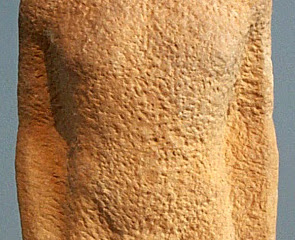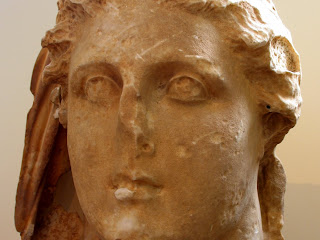 Ernest Gardner was the first Cambridge student at the BSA (1886/87). One of the tasks for his first year was a survey of Greek sculpture including a description of Cavvadias' installation in the Athenian Central Museum (later known as The National Archaeological Museum). Gardner mentioned works from Tegea, Delos, and Epidauros now on display in Athens, and then reviewed the displays in the Acropolis Museum, noting the newly discovered archaic statues, and the museum at Olympia. The archaic sculptures from the Athenian akropolis were the subject of a longer, separate study.
Ernest Gardner was the first Cambridge student at the BSA (1886/87). One of the tasks for his first year was a survey of Greek sculpture including a description of Cavvadias' installation in the Athenian Central Museum (later known as The National Archaeological Museum). Gardner mentioned works from Tegea, Delos, and Epidauros now on display in Athens, and then reviewed the displays in the Acropolis Museum, noting the newly discovered archaic statues, and the museum at Olympia. The archaic sculptures from the Athenian akropolis were the subject of a longer, separate study.Gardner researched the technique of ancient Greek sculpture through the study of unfinished pieces. These included an kouros from Naxos (Athens NM 14; cat. no. 67), a late classical piece from Rheneia, and other unfinished pieces in the Archaeological Museum.
A further study published from Gardner's time as director was a head from his excavations at Paphos on Cyprus, and the stela of Kephisodotos, possibly from Lerna, in the museum at Argos.
After his move to University College London, Gardner prepared a Handbook of Greek Sculpture.
References
Gardner, E. A. 1887. "Recently discovered archaic statues." Journal of Hellenic Studies 8: 159-93. [JSTOR]
—. 1887. "Sculpture and epigraphy, 1886-1887." Journal of Hellenic Studies 8: 278-85. [JSTOR]
—. 1890. "The processes of Greek sculpture as shown by some unfinished statues at Athens." Journal of Hellenic Studies 11: 129-42. [JSTOR]
—. 1890. "Two fourth century children's heads." Journal of Hellenic Studies 11: 100-08. [JSTOR]
—. 1896. A handbook of Greek sculpture. Handbooks of archaeology and antiquities, vol. 1. London: Macmillan and Co. [WorldCat]
—. 1897. A handbook of Greek sculpture. Handbooks of archaeology and antiquities, vol. 2. London: Macmillan and Co. [WorldCat]
Unfinished kouros from Naxos. © David Gill.



